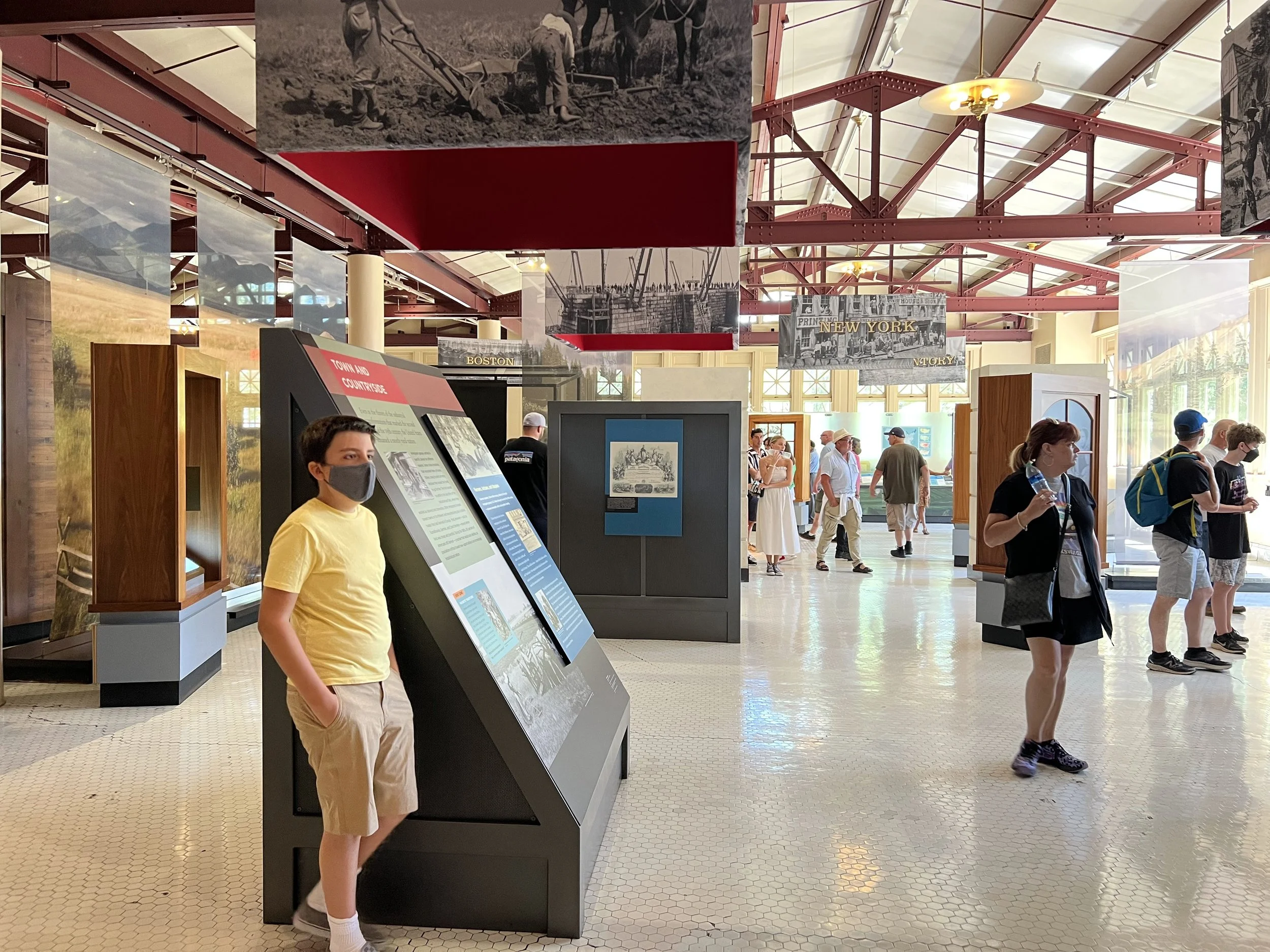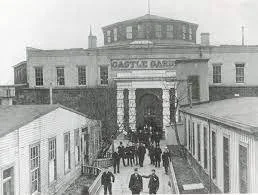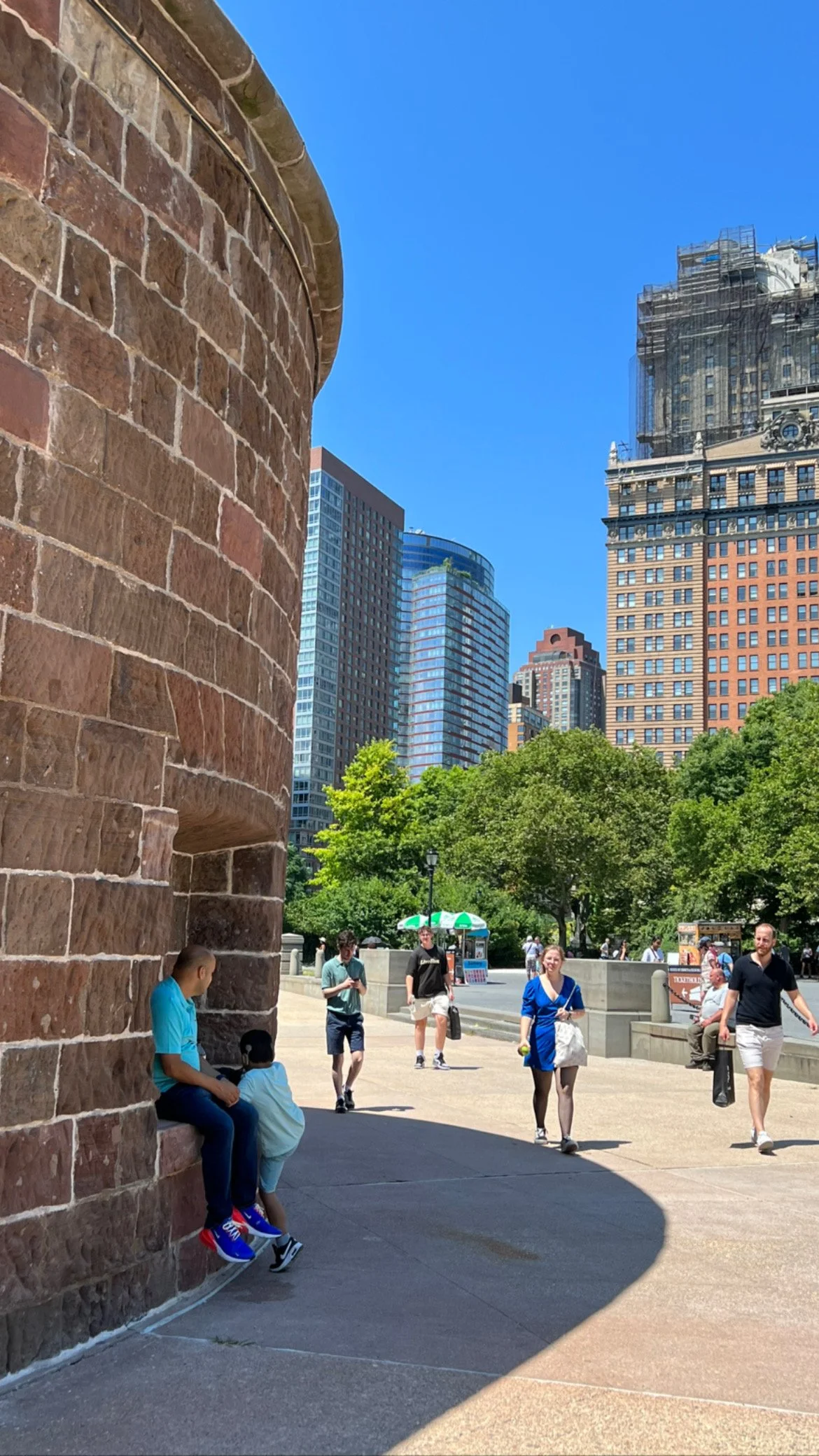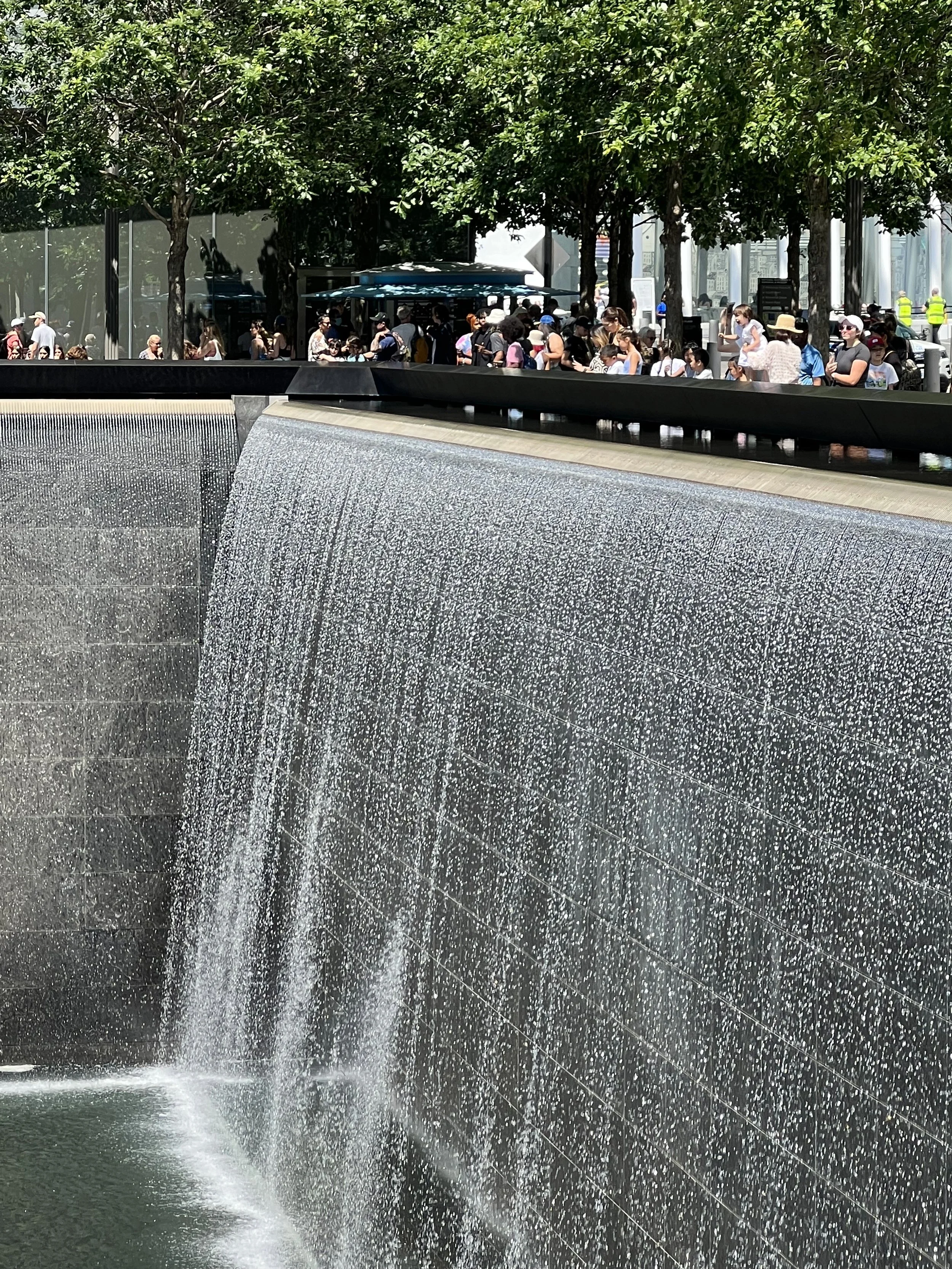Ellis Island, located in the New York harbor, functioned as an immigrant processing station from 1892-1954, and processed a total of around 12 million immigrants. The buildings sat abandoned from the 50s to the 80s, and were in rough shape before they were thoroughly restored. The buildings now function as a museum about the island itself, as well as the greater history of immigration in America.
The island also features what used to be an infectious disease hospital (apparently in the early 20th century, it was the largest public health facility in the US) - these building are only accessible by what is referred to as a “hard hat tour,” presumably due to the condition of the buildings.
The main exhibit on the first floor focuses on the history of immigration to the US, and does not reference the adjacent architecture much, instead intending creating novel educational experiences through the use of freestanding exhibit panels, as well as audio and video elements. The result is somewhat jumbled and only vaguely directional, with some redundancy in information (depending on the order in which you wander between the panels).
The upper levels, which focus on Ellis Island more specifically, are much more restrained in their exhibition design: themed rooms with simpler display panels, black and white photographs, and walls of prints or artifacts. Information is sometimes held back from the perimeter of the room, organized in the center, encouraging visitors to circulate around.
Preserved sections of the building itself also feature heavily in these exhibits, including the main Registry Room, hearing rooms for the Board of Special Inquiry, and preserved graffiti in situ.
Outside of the exhibition material, architectural interventions are minimal, but include the East Wing Light Court, which was converted from a light well to a skylit circulation space during the building’s restoration.
In all, the museum is a pleasant visit and a really great resource, and certainly a popular destination for school groups as well as tourists. However, with so much space, I wonder if the programming could go beyond that of just a museum. I suppose the fact of being an island is limiting in this regard (construction would be very expensive, and access is somewhat limited) but given the huge numbers of visitors and existing regular ferry service, expanded programming definitely seems within the realm of possibility.
Located at the tip of Manhattan in what is now Battery Park, Castle Clinton was built in 1812 as a battery, part of a larger system of forts that were meant to protect New York Harbor.
Side note: I learned that the star-shaped base of the Statue of Liberty was also originally one of these forts, Fort Wood, and was repurposed as the statue’s base.
In the 1820s, Castle Clinton was renamed “Castle Garden,” and used by the city as an event space. Then, in 1855, it was converted to an immigrant processing center, before Ellis Island opened. Then, bizarrely, it was converted into an aquarium that operated until 1941.
Source: https://www.nps.gov/cacl/learn/historyculture/index.htm
The building was restored to its original design by the National Park Service, and reopened in 1975. It now serves mostly as a visitor center, in which you can buy tickets for Ellis Island and Liberty Island.
I struggled to find documentation of what exactly these many renovations entailed, but vintage photographs indicate they were extensive. I find it interesting that the NPS chose to restore the building to its battery design - I wonder how much of the original building remained intact, and whether the battery could have been adequately acknowledged in some way from its later incarnations. It would be fascinating to see a more comprehensive overview of how the structure changed to accommodate these diverse uses over time, especially since today, it doesn’t feel like there’s much to see: one fading, permanent information plaque outside the southern entrance references the building’s history, but scarcely anyone stopped to read it. The northern entrance feels like the main entrance, as that’s the general direction of visitors to Ellis/Liberty islands. Inside, a spread of more temporary exhibit panels are nestled to one side, but its clear that for the most part, this building exists more to serve the other historical sites, rather than highlight its own story.
The 9/11 Memorial and Museum opened in 2014 and honors the almost 3000 people who were killed in the 9/11 attacks. The design consists of two fountains, occupying the former building footprints of the twin towers. I had not visited this memorial before, and was very moved by the experience. The constant movement and sound are very engaging, drowning out the din of tourists and cars nearby. This results in a much more immersive experience than I expected, especially given the heat and the crowds on the day I visited.
This strategy of referencing former building extents is similar to the Berlin Wall memorial. I think this is strategy can be really effective in its simplicity and scale. The choice to reference the absence of something is both poetic and visually dramatic.
I also think it’s worth noting that the collapse of these buildings resulted in the redevelopment of the World Trade Center site, with a master plan from Daniel Libeskind. The plan includes 6 new skyscrapers (4 of which have been built already) and a transit center, in addition to the memorial and museum.
The transit center is beautiful and convenient, and Calatrava’s design even integrates a memorial element: the Oculus, which only opens once a year on September 11th, and frames a view of 1 World Trade. It seems very unique to incorporate a commemorative element into a mostly commercial building - I wonder where else this strategy has been employed.
I’m interested in the idea that such a tragedy - a singular act of destruction - has in a roundabout way resulted in the extensive redevelopment of an urban area. Maybe the eventual transformation of this site is a testament in its own right to the powerful effects of destruction: emotional, physical, and temporal.













